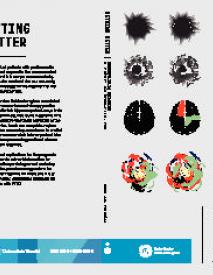Getting Better. Neurobiological mechanisms of recovery from combat-related PTSD
Military personnel often experience traumatic events during deployment. In the aftermath of a traumatic event, a subgroup of trauma survivors develops posttraumatic stress disorder (PTSD).Most (neurobiological) studies aim at understanding why some trauma survivors develop PTSD whereas others do not. However, far fewer studies have focused on the question why some PTSD patients recover and why about thirty to fifty percent do not respond to treatment. This latter question is particularly relevant, because those who do not respond often develop a persistent state of PTSD in which the disorder places a large burden on the individual, their families and society in general. The aim of this dissertation was to investigate neurobiological mechanisms of recovery from combat-related PTSD. Two magnetic resonance imaging (MRI) scans were acquired from 58 war veterans with PTSD with a six to eight month interval. To control for the effect of time, habituation and learning, 29 healthy veterans (combat controls) were also assessed twice. In addition, a non-military healthy control group (N=26) was included in the first assessment to control for the effects of deployment.In between the scans, patients were treated with trauma-focused therapy, the preferred treatment according to international guidelines. Trauma-focused therapy is based on extinction learning for which attention, emotional and contextual cue processing, as well as memory and learning are vital processes. Therefore, these processes and related brain regions were analyzed with structural and functional MRI. Already prior to treatment, PTSD patients who are likely to recover were comparable to combat controls, but could be distinguished from patients who do not respond to treatment. This latter group is characterized by a smaller left hippocampal volume, a brain region involved in learning and memory. Moreover, increased pre-treatment activation of regions involved in attention and emotion processing (i.e. the dorsal anterior cingulate cortex, insula and amygdala) predicted persistence of symptoms. Finally, it was observed that more brain activation during contextual cue processing predicted a better treatment response. This activation was observed in the left inferior parietal lobe, a brain region involved in working memory updating. In this dissertation, it is demonstrated for the first time that brain regions involved in trauma-focused therapy constitute predictive biomarkers for treatment response in PTSD. Also, whereas neurobiological alterations were thought to characterize all patients, here it is shown that PTSD patients who were likely to recover did not differ from healthy veterans. This study has valuable implications for the prognosis of PTSD patients, and provides relevant information for psychoeducation during military training as well as during treatment. Moreover, this dissertation has suggestions for development of new treatment options for PTSD. Finally, it is an important step towards providing customized treatment for patients with PTSD.
Geachte bezoeker,
De informatie die u nu opvraagt, kan door psychotraumanet niet aan u worden getoond. Dit kan verschillende redenen hebben,
waarvan (bescherming van het) auteursrecht de meeste voorkomende is. Wanneer het mogelijk is om u door te verwijzen naar de bron
van deze informatie, dan ziet u hier onder een link naar die plek.
Als er geen link staat, kunt u contact opnemen met de bibliotheek,
die u verder op weg kan helpen.
Met vriendelijke groet,
Het psychotraumanet-team.
Reference:
S.J.H. van Rooij | 2015
dspace.library.uu [host]
http://dspace.library.uu.nl/handle/1874/302856
Utrecht University
dspace.library.uu [host]
http://dspace.library.uu.nl/handle/1874/302856
Utrecht University


